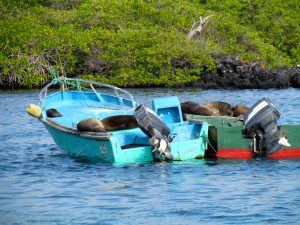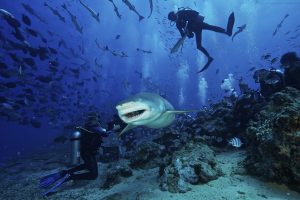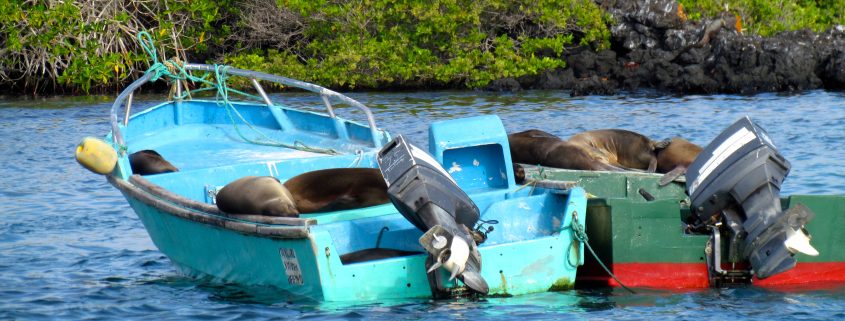The Three Pillars of Ecotourism
By Emily Rose Nelson, SRC Intern
Conservationists, scientists, and politicians alike are increasingly starting to understand that the natural environment can no longer be effectively managed as a separate entity from humans. We have left footprints nearly everywhere on earth and therefore, it is essential we start to factor ourselves into the equation when putting together management plans. One means of doing this, the development of ecotourism, has gained popularity in recent years. At its best, ecotourism brings people to some of nature’s most pristine areas, which then promotes conservation of wildlife and habitat, all while improving the lives of local people. At its worst, ecotourism can bring massive amounts of people to an important wildlife area, causing destruction, and completely uprooting the lives of already impoverished people. Ecotourism development, especially in developing countries, is a complicated process that requires the involvement of numerous stakeholders. Fortunately, Barnett and colleagues in fields such as fisheries science, tourism, economics, ecosystem ecology, business management, and social science have created a guide of best practices to be followed in order to create successful ecotourism in developing countries. Barnett et al. identified three main pillars of sustainability needed for ecotourism: sociocultural, environmental, and economic.
The sociocultural aspect is meant to help gain support from locals for the ecotourism project as well as identify any important social or ecological issues. This pillar needs to evaluated before anything else because without support of the locals, nothing will be affective. Bringing ideas and practices from Western society into developing countries is difficult and needs to be done carefully. Extensive research on the local culture and norms needs to be done before attempting to throw developed culture on a developing nation. For example, in the developing world fishing is often an important part of culture and considered sacred. The idea of sportfishing for pleasure, so common to our society, may be considered intrusive and rude to these people. It is also important to understand ownership and occupancy of natural resources to avoid conflicts. Finally, adapting to tourism require a whole new social and cultural norms. Locals may be resistant to this change, even if it is providing alternatives to a struggling society. It is necessary to work with the people, provide fisherman the opportunity to work as fishing guides or complement the ecotourism with public health projects to ensure they still benefit.

Boom and bust fishing cycles in the Galapagos Islands has led to the development of ecotourism, some of which as been very difficult on the locals.
The second pillar, environment, can be addressed only after the local people are on board with the plan. At this point, plans need to be set in place to manage the resources and gain the necessary scientific background on the biology and ecology of them. The basic requirement underlying ecotourism is that there is an ongoing product available to attract customers. In the case of something like sportfishing, this means the continual availability of healthy fish stocks and the conservation of their habitats. In order to ensure this, detailed studies need to be done to develop baseline knowledge of the resources that can be used for effective management. Information on fishing mortality, catch handling and post-release conditions should also be gathered and incorporated into stock assessments and best practice protocols for catch and release. When developing an ecotourism, it is critical that local people support and benefit from it. Therefore, they will have a reason to abide by conservation regulations and sustain the ecosystem. Further, if the ecotourism is able to promote the long term benefits of conservation minded practices conflicting interests that are destructive will not be given priority.
The final section, economic, should ideally only be considered after the first two are going smoothly. However, in developing nations a business plan is often implemented to the ecotourism before the necessary knowledge is acquired in efforts to generate income as quickly as possible. Unfortunately, this can have detrimental impacts if it involves threatened species or ecosystems. When done properly ecotourism can have huge economic benefits for developing nations. Locals should be given as much opportunity as possible to get involved in the business. They should be given the option of employment in the ecotourism directly filling roles such as guides or mechanics and if they are not yet equipped with the necessary skills they should be given the opportunity to learn. If not working directly for the business, they could sell local goods and services to the influx of tourists to their community. Despite these opportunities, economic development sometimes comes with unavoidable costs. In order to minimize these costs access rights should be negotiated, cultural protocols should be followed, and environmental damage should be safeguarded against.

Shark Reef Marine Reserve in Fiji is a successful example of ecotourism. Here, divers pay a fee, which is distributed to local villages that have given up their fishing rights for conservation.
By concentrating on these three pillars of sustainability it is possible to develop effective and sustainable ecotourism. Inevitably, problems will arise throughout the creation of any ecotourism plan. Therefore, it is important to realize that this is not a one size fits all plan approach, and that the guidelines described should be used and modified to fit individual situations and change as ecotourism develops. Ecotourism models should include short term coping mechanisms as well as long-term capacity building. When all of this is done, it is possible for ecotourism to provide mutual benefits to tourists, local people, and the environment.
Reference:
Barnett, A., Abrantes, KG., Baker, R., Diedrich, AS., Farr, M., Kuiboer, A., et al. (2015). Sportfisheries, conservation and sustainable livelihoods: a multidisciplinary guide to developing best practice. Fish and Fisheries, DOI: 10.1111/faf.12140.




Leave a Reply
Want to join the discussion?Feel free to contribute!